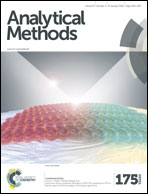Evaluation of botulinum toxin type A by bioassays and a validated reversed-phase liquid chromatography method
Abstract
The biological potency of botulinum toxin type A (BoNTA) in biotechnology-derived products was assessed by the mouse LD50 bioassay (MBA) and the T47D cell culture assay. A stability-indicating reversed-phase liquid chromatography (RP-LC) method was validated to determine the content of BoNTA. The method was carried out on a Zorbax 300SB-C18 column (150 mm × 4.6 mm i.d.) maintained at 45 °C. The mobile phase consisted of 0.05 M sodium phosphate buffer solution, pH 2.8, and acetonitrile, run isocratically at a flow rate of 0.3 mL min−1, and using photodiode array (PDA) detection at 214 nm. Separation was obtained with a retention time of 11.4 min, and was linear over the concentration range of 0.2–100 U mL−1 (r2 = 0.9999). Specificity was established in degradation studies, which also showed that there was no interference from the excipients. The accuracy was 100.31% with bias lower than 0.80%. The method was applied to the content assessment, and the results were compared to those of the MBA, giving mean values of 1.16% lower, demonstrating potential to improve the characterization and quality consistency of the products.


 Please wait while we load your content...
Please wait while we load your content...